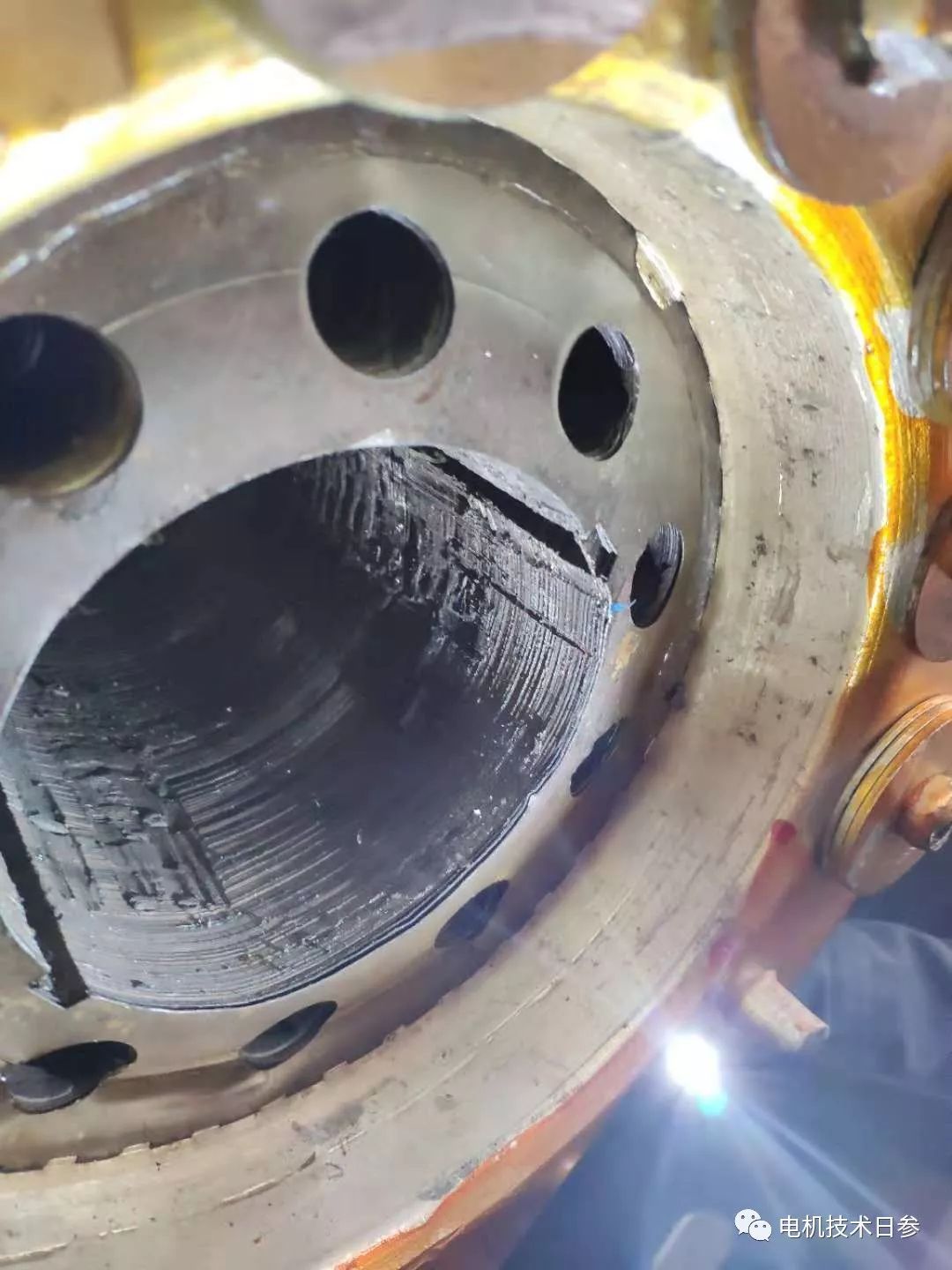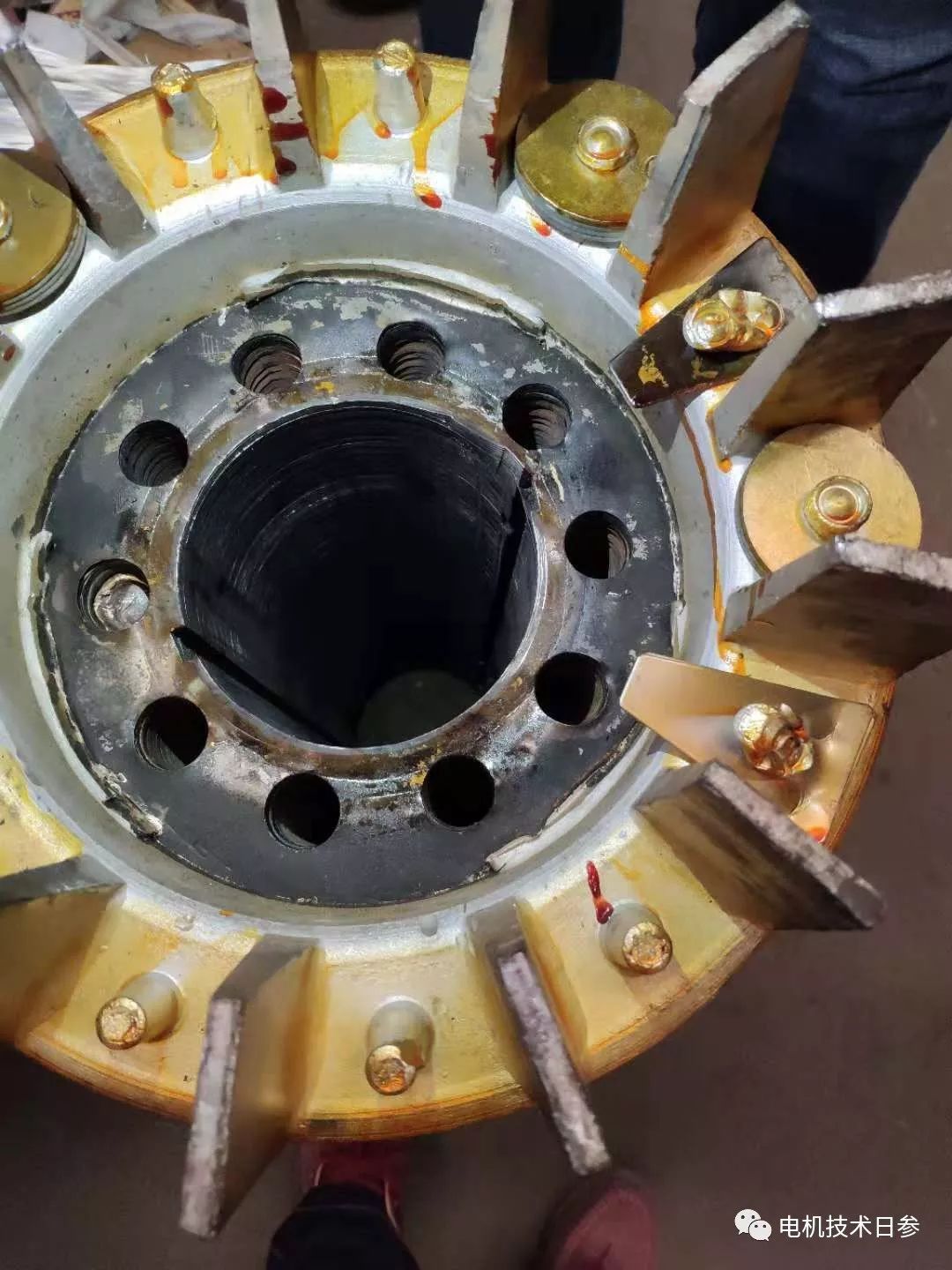Ms. Shen’s good friend, old W, works in a certain repair shop. Because of the same major, the two naturally have more topics on faulty motors. Ms. Shen also has the privilege and opportunity to see motor fault cases. Their unit has undertaken a H355 2P 280kW cast aluminum rotor motor. The customer said that there was obvious vibration during the debugging process, and the replacement of the bearing did not work. However, due to the time requirement for heating, the manufacturer could only turn to the nearest repair unit. , which is the unit where the old W is located.
Combined with the measures taken by the customer, the shaft can be pulled out manually during disassembly and maintenance. The size of the iron core shaft hole and the shaft of the motor rotor core is detected. The fit between the two is an obvious clearance fit, and the minimum clearance is 0.08mm on one side. The repair unit gave feedback on the problem to the manufacturer, and they conducted a comprehensive inspection on the occurrence of the problem. Due to my good friend old W, Ms. Shen has a little understanding of the process of the problem, coupled with my own analysis of the problem, I will share this case with you.
●There are circumferential scratches in the circumferential direction of the shaft, but it does not cause too much impact on the original machined surface. According to the data provided by the manufacturer , there is no big problem with the machining size of the shaft, and the diameter of the shaft hole is obviously out of tolerance .
●When the size of the rotor shaft hole is too large, it can be found that the shaft hole at one end is seriously damaged, and there are obvious signs of pot bottom at the end of the iron core;
●There are obvious real scratch marks in the axial direction of the shaft hole, which should be caused by the withdrawal process of the shaft;
●The surface of the rotor is completely black, which is obviously in a state after being heated; the rotor slots are seriously sawtoothed.
From the inspection, it was found that the rotor shaft had been heated and withdrawn. This process caused the diameter of the shaft hole to be damaged and enlarged. After the standard shaft was inserted again, the rotor was centrifugal during the operation of the motor, and periodic and non-periodic contact with the shaft occurred. Shock, and the end result is motor vibration. This problem may occur in the test stage of the motor, or in the use stage of the motor, but it is a fatal blow to the motor itself.
When the rotor of the motor cannot meet the balance control requirements during the dynamic balancing process, check the rotor for horseshoe problems, withdraw the shaft through oil-stuffed cold pressing, and then put in the calibration tool ( similar to a false shaft) to shape the cast aluminum rotor core. After the completion, the shaft and the iron core are tightly bonded and cannot be withdrawn, and the shaft is forcibly withdrawn by cold pressing, which eventually leads to serious damage and deformation of the iron core hole, and the diameter of the shaft hole is also seriously out of tolerance; resulting in blackening of the rotor The reason is that the shaft and rotor are heated during the initial shaping.
Similar problems may be encountered by different motor manufacturers, but the repair process is sometimes more difficult to control than the normal production and processing process, because each case will have its own individual characteristics, but how to solve this problem is a matter of technology and management. effective fusion.
Post time: Apr-17-2023

